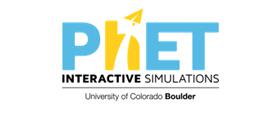- View more resources from this publisher
 PhET Interactive Simulations University of Colorado Boulder
PhET Interactive Simulations University of Colorado Boulder
PhET Interactive Simulations
To help students engage in science and mathematics through inquiry, PhET simulations were developed to allow students to investigate cause-and-effect relationships and answer scientific questions through exploration of the simulation.
Several tools in the simulations provide an interactive experience:
*Click and drag to interact with simulation features
*Use sliders to increase and decrease parameters
*Choose between options with radio buttons
*Make measurements in your experiments with various instruments – rulers, stop-watches, voltmeters, and thermometers.
Resources
Filter
pH Scale *suitable for home teaching*
This simulation allows students to test the pH of substances like coffee, spit, and soap to determine whether each is acidic, basic, or neutral. It can be used to visualise the relative number of hydroxide ions and hydronium ions in solution, switch between logarithmic and linear scales, and investigate whether...
Reactants Products and Leftovers
The simulation can be used to:
*Relate the real-world example of making sandwiches to chemical reactions.
*Describe what limiting reactant means using examples of sandwiches and chemicals at a particle level.
*Identify the limiting reactant in a chemical reaction.
*Explain the Law of...
Resistance in a Wire
This simulation looks at resistance in a wire. Students can change the resistivity, length, and area to see how they affect the wire's resistance. The sizes of the symbols in the equation change along with the diagram of a wire as the variables are changed.
Under Pressure
This simulation can be used to explore pressure under and above water and see how pressure changes as you change fluids, gravity, container shapes, and volume.
Sample learning objectives include:
*Describe how pressure changes in air and water as a function of depth.
*Describe what variables...





